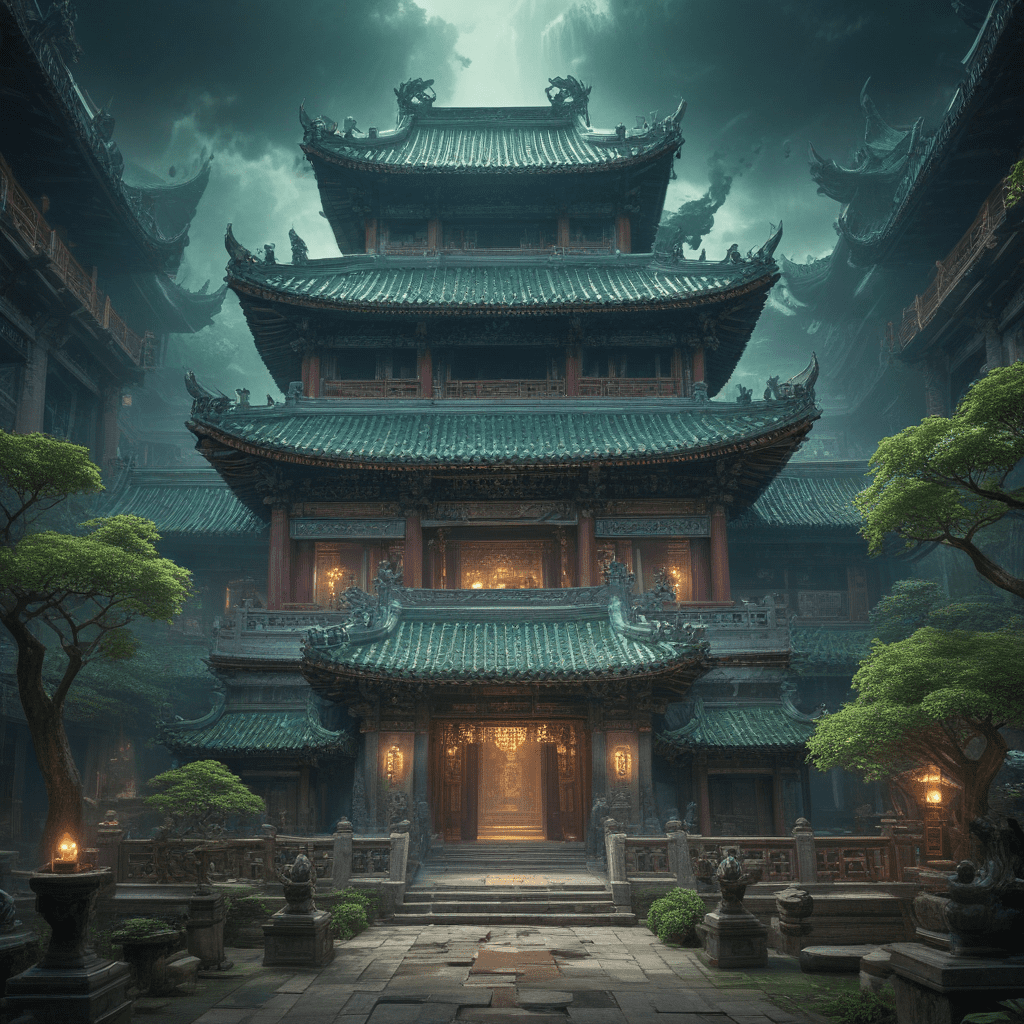Introduction: The Majestic Celestial Palace
The Jade Palace, a celestial abode enshrined in Chinese mythology, stands as a magnificent and mythical symbol of heavenly authority. Its origins are steeped in ancient lore, with tales of its creation and inhabitants woven into the fabric of Chinese culture.
The Birth of the Jade Emperor
According to legend, the Jade Emperor, the supreme ruler of heaven, was born from the essence of chaos. As the universe took form, primordial energies coalesced into a radiant pearl, which later transformed into the celestial ruler. The Jade Emperor established his celestial abode, the Jade Palace, as the seat of his power.
The Construction of the Heavenly Palace
The Jade Palace, an architectural marvel, is said to be constructed from precious jade, its walls shimmering with an ethereal glow. Its towering spires reach towards the heavens, and its intricate carvings depict scenes of celestial harmony and cosmic order. The palace's grandeur reflects the Jade Emperor's supreme status and his dominion over the realms of heaven.
6. The Dualism of the Palace
The Jade Palace represents both the celestial and earthly realms. It serves as a bridge between the divine and the mortal, allowing immortals and deities to interact with humans. Within its halls, the Jade Emperor holds court and mediates between the realms, ensuring harmony and balance in the universe.
7. Legends and Symbolic Interpretation
Numerous legends and symbolic interpretations surround the Jade Palace. It is said that the palace's jade symbolizes purity, longevity, and immortality. Its intricate carvings depict the interplay of yin and yang, representing the balance of opposing forces in the universe. The palace's towering spires symbolize the connection between heaven and earth.
8. The Jade Palace in Chinese Culture
The Jade Palace holds immense significance in Chinese culture. It is a symbol of heavenly authority, cosmic order, and the harmony between the celestial and human realms. Its image is found in art, literature, and religious practices, representing the aspiration for divine favor and the pursuit of enlightenment.
9. Variations and Adaptations of the Tale
Over time, the legend of the Jade Palace has evolved into various versions and adaptations. In some tales, the palace is depicted as a more extravagant and opulent abode, while in others, it retains its simplicity and elegance. These variations showcase the fluidity and adaptability of Chinese mythology.
10. Conclusion: The Enduring Legacy of the Jade Palace
The Jade Palace stands as an enduring symbol of the Chinese people's rich imagination and their profound belief in the celestial realm. Its depiction in mythology, art, and culture reflects the human desire for cosmic order, harmony, and the connection between heaven and earth. The Jade Palace continues to inspire awe and wonder, capturing the essence of Chinese mythology and its enduring legacy.
Frequently Asked Questions (FAQ):
Q: Who lives in the Jade Palace?
A: The Jade Palace is the celestial abode of the Jade Emperor, the supreme ruler of heaven, as well as other immortals and celestial beings.
Q: What is the Jade Palace made of?
A: The Jade Palace is said to be constructed from precious jade, a stone associated with purity, longevity, and immortality.
Q: What is the significance of the Jade Palace?
A: The Jade Palace represents the celestial realm, heavenly authority, and the harmony between heaven and earth. It serves as a bridge between the divine and mortal realms.



